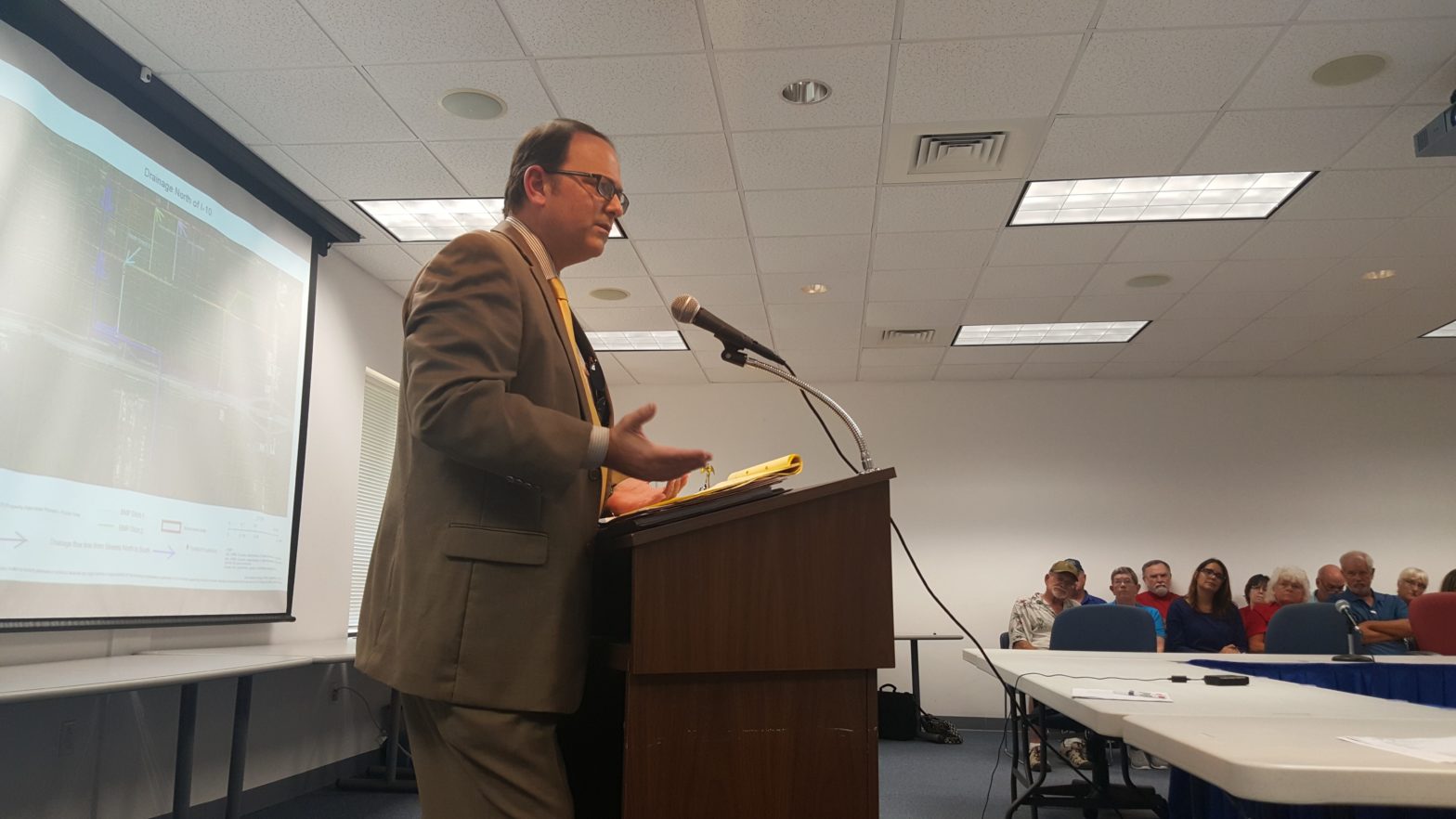![Will Dunaway, a Pensacola-based environmental lawyer, speaks to the panel of county officials and representatives from state agencies about possible remediation for Indian Bayou red clay pollution. [ALICIA ADAMS | Press Gazette]](http://127.0.0.1/wordpress/wp-content/uploads/2022/01/ghows-DA-5b95ad69-1f60-6db8-e053-0100007fa3a2-2e893015-scaled.jpeg)
MILTON — A long-awaited meeting took place on Tuesday between members of many county and state agencies and residents of Milton who are concerned about the red clay pollution in Indian Bayou.
Residents of the neighborhood Monterey Shores noticed runoff from Interstate 10 construction approximately 18 months ago, and have been working to cease the pollution they say is ruining the bayou, the wildlife and their way of life.
Representatives from state agencies attended the meeting along with Santa Rosa County officials. Those representatives included Colby Cleveland, environmental administrator for the Florida Department of Transportation; Brett Cyphers, the executive director of Northwest Florida Water Management District; and Shawn Hamilton, the Northwest Florida district director for the Florida Department of Environmental Protection.
Commissioner Sam Parker chaired the meeting, and Commissioners Lane Lynchard and Rob Williamson were in attendance.
More than a dozen residents attended the meeting, and several approached the panel to explain frustrations they have felt while watching the waterway they live on turn red each time it rains, and seeing wildlife disappear.
The meeting was requested by Monterey Shores resident Judy Walker with the help of Barbara Albrecht — a local marine biologist who has been assisting the residents with their cause — and Will Dunaway, a Pensacola environmental lawyer who has taken on the case pro-bono.
Each agency explained the steps they have taken to stop the pollution, which has come from two places: regular grading of a local dirt road called San Juan where there are no homes, and construction on Interstate 10 where piles of red clay have leached into ditches and creeks that feed into Indian Bayou.
The county has reduced maintenance on San Juan Road, installed best management practices, which include hay bales, grassing, fencing and rock, and initiated programs to investigate the wetland areas.
One of those programs was Environmental Programs Coordinator Shelley Alexander investigating areas where red clay was leaching into the bayou and examining whether the best management practices were working; according to her, they were, and the turbidity levels are lower.
FDEP has conducted site visits and initiated formal compliance enforcement offers and warning letters to FDOT to cease all discharge, according to Hamilton.
Cleveland said FDOT has been trying to get ahead of heavy rain events and had installed check dams to capture the sediment. They are also covering the sediment that is exposed, pumping dirty water into a filtration system until they can dispose of it offsite, and holding the contractor accountable for the damage.
Cyphers said NWFWMD will support whatever the county chooses to do to correct the issue, but their first priority is finding ways to stop sediment from reaching the bayou.
Although there was no solution found for how to correct the damage that has already been done, the agencies agreed they would work together to find the best resolution.
Commissioners Parker and Williamson agreed that the county shouldn’t have to foot the entire bill; therefore, they would ask the state to step in with funding options, including grants.
Parker said receiving this funding could take a year or more, and asked the residents to continue to reach out to state representatives — including Congressman Matt Gaetz — so that all of the responsibility doesn’t fall on the county.




This article originally appeared on Santa Rosa Press Gazette: County, state officials discuss Indian Bayou pollution
